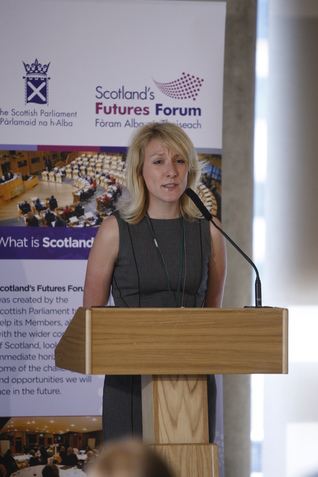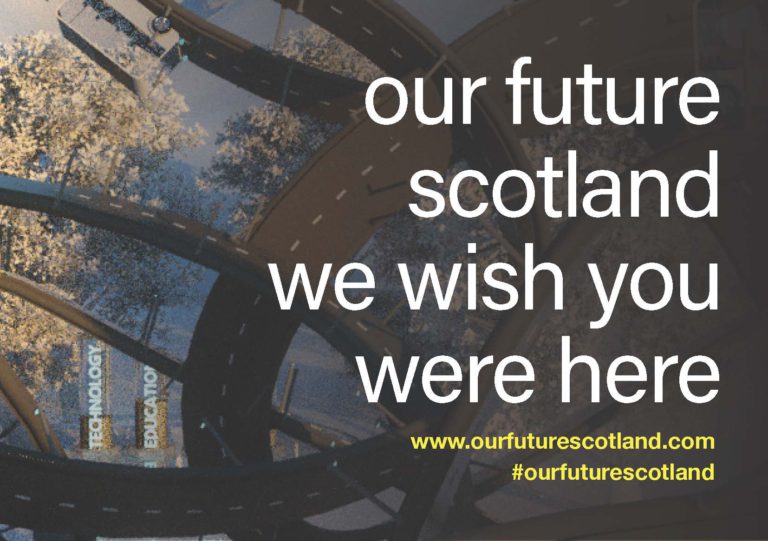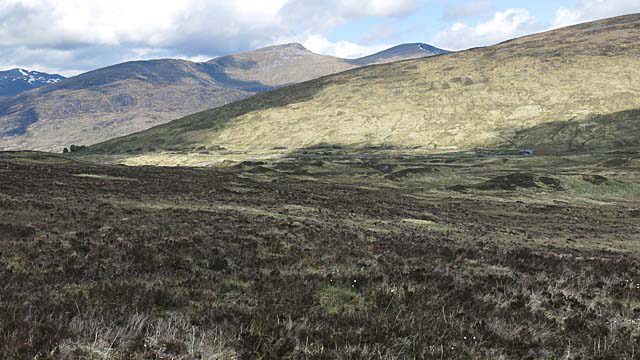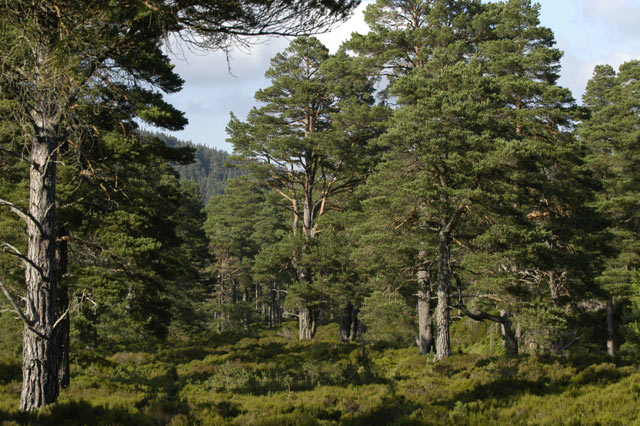Bananas, the Leaning Tower of Pisa and Scotland’s Environment
By Dr Steph Smith, Scotland’s Rural College and @ScienceSeaweed
Humans are curious creatures. Not in the sense that we are random assemblages of cells which share about 50% of our DNA with a banana; but curious in our desire to learn. The Scottish’s Parliament’s own future ‘think tank’, Scotland’s Futures Forum, and the Scottish Environment, Food and Agricultural Research Institutes (SEFARI) share such curiosities. In a part-time fellowship funded by the recently established SEFARI, I was able to take time away from my post-doctoral role at Scotland’s Rural College (SRUC) and join the Futures Forum team for a couple of months to predict what Scotland might look like in 2030 from an environmental perspective.
Left equipped with 20 days, an open door and a free Futures Forum pen, it dawned on me the woolly mammoth of a task I had taken on. Hadn’t philosophers, economists and scientists dedicated their lives to such questions, never mind the uncertain unfoldings of Brexit and shifting global politics?? The leaning tower of Pisa took over 199 years to build and they still got it a bit squiffy! Breaking my objective down into smaller, still significant questions, I decided to stop asking myself and to start asking others.

As a scientist with an innate desire to detect and interpret patterns I started by asking fellow pattern-seekers from across the six institutes which work to deliver a portfolio of RAFE (Rural Affairs, Food and the Environment) Strategic Research, funded by the Scottish Government. These are SRUC (of which I am an employee), Moredun Research Institute, the James Hutton Institute, Royal Botanic Garden Edinburgh, Biomathematics and Statistics Scotland, and the Rowett Institute at the University of Aberdeen. The research from these institutes is interdisciplinary and covers everything from our soil quality, crop resilience, livestock genetics, animal welfare and rural communities.
Following this, I spoke to members of the Scottish Parliament Information Centre (SPICe), dedicated to providing factual and impartial analysis to members of the Scottish Parliament in support of parliamentary business, and I reviewed many of SPICE’s useful briefings on major contemporary subjects. Following this I spoke to my engineer friend; my teenage cousin; a man on the bus. Anyone.
Ultimately, from my reading and questioning, it is apparent Scotland is destined to look warmer and wetter, and be more exposed to extreme weather and flooding, risk of invasive species and re-distribution of some of our native biodiversity.
Beyond those major trends, I also observed three main determinants likely to influence the trajectory to Scotland’s environment in 2030. First is the legislation put in place following Brexit, future trade arrangements, our market position and the reallocation of budgets – and, ultimately, the duration across which all of these become manifest.
Secondly, our valuation of ‘natural capital’ in economic decisions, which has historically not been accounted for compared with other types of capital, will also be important.
Thirdly, we have to consider human behaviour and our willingness to adopt new and advanced technologies and approaches. Genetics can allow approaches tailored to climate resilience in agricultural products, targeted vaccination can maximise production efficiency, and better understanding of the biophysical capabilities of different land types can optimise its use.
From this fellowship, I have written a report (Scotland 2030: How resilient and well-functioning will Scotland’s environment be?), and I have also written some “Wish you were here?” postcards from the future. These are designed as postcards I am sending to you (in 2017) from 2030, in which I try to relay what I see and what has occurred over the intervening years. In the nature of this task, I could only touch on the huge range of topics that will have to be considered, and I am sure many experts in the field will identify many more important issues. But by presenting it in this way we hope it will act as a catalyst to get people thinking, stimulate debate and discuss potential policies which may be required above and beyond the electoral cycle.
In finishing, I would just like to thank some key people who have made all this work possible: firstly, Graeme Cook for awarding me the SEFARI fellowship and this opportunity; Rob Littlejohn for hosting me as part of Scotland’s Futures Forum; my line manager Eileen Wall for allowing me time away from my day job to complete this work and her support; to Knowledge Exchange Sectoral lead for ‘Soil and environment’ Lorna Dawson; and a particular and extra special thanks to the KE sectoral leads for ‘Communities’ and ‘Livestock’, Steve Thomson from SRUC and Philip Skuce from the Moredun Research Institute respectively, for their unwavering support, informed feedback and encouragement.
Read more about Steph’s research project here
Watch the videos from the Futures Forum’s Our Environment event in June 2017
Scotland’s Futures Forum exists to encourage debate. The views expressed in this blog are those of the author and do not necessarily reflect the Forum’s views.






